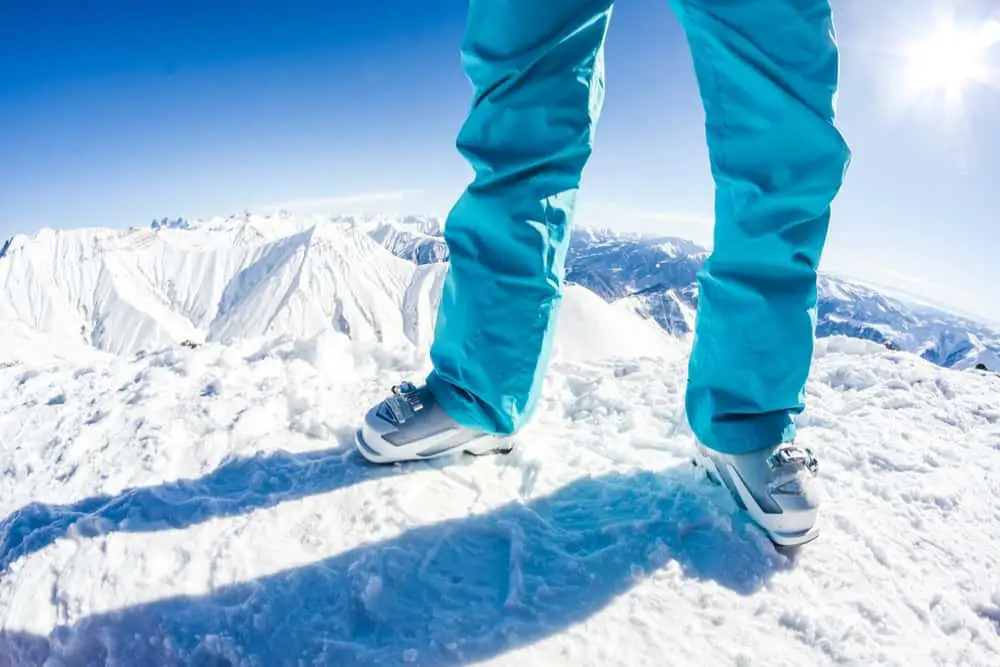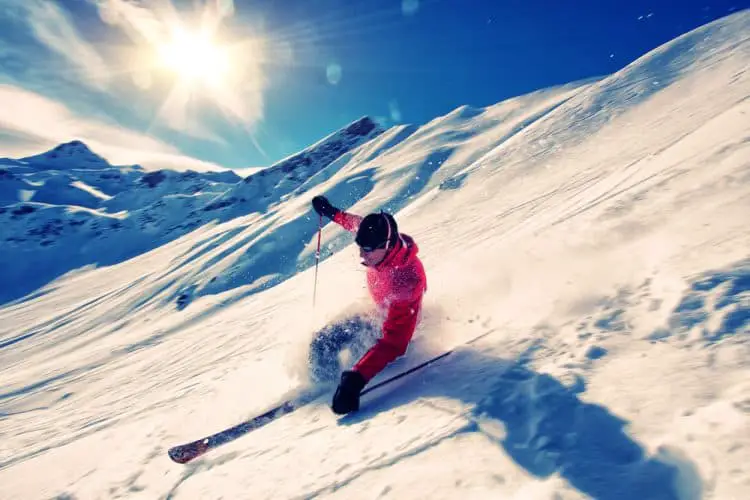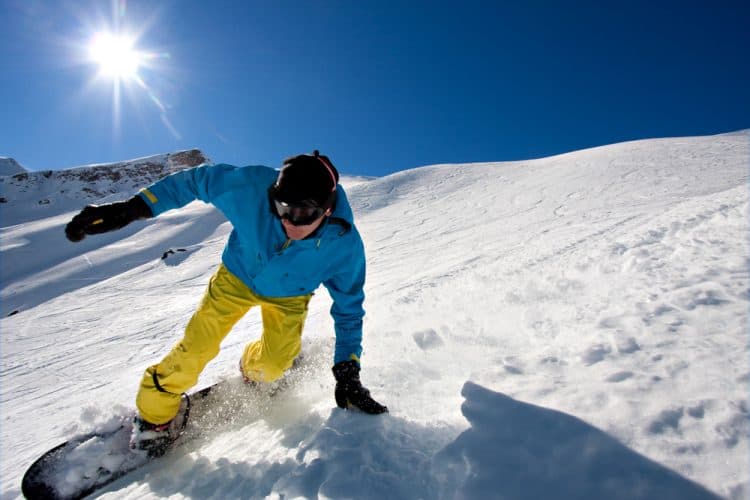Can You Hike In Ski Pants? A Seriously Cool Guide
Wearing the right pants can make a world of difference when it comes to hiking, and don’t we know it!
As some wise soul out there said – there’s no such thing as bad weather, only bad clothing.
When it comes to winter hiking, ski pants are one of the first items of clothing to come to mind. They’re durable, waterproof and insulated. They seem like the perfect outdoor protection.
But can you hike in ski pants? While you can definitely hike in ski pants, we don’t recommend it.
The insulation can work against you in the long-run, collecting sweat and moisture. In hot climates, you’ll probably end up getting a heat stroke. The heavy material and bulky design isn’t very appropriate for hiking either.
This guide will walk you through the pros and cons of hiking in ski pants. Our team has also clarified what you should wear for winter hiking instead.
Let’s dive in.
Can You Hike in Ski Pants?
Yes, you can hike in ski pants.
Designed to be durable and with adequate waterproofing, ski pants sound exactly like the sturdy, protective gear you’re looking for when traipsing through the woods.
More insulated than your usual pants, it’ll keep you toasty on frostier, snow-grounded hikes.
The real question is: should you hike in ski pants? The answer is no. To understand why, let’s look at the pros and cons of hiking in ski pants.
Pros of Hiking in Ski Pants
Three immediate advantages that ski pants bring come to my mind.
- Durable – You won’t be feeling any scrapes for sure. Since the fabric has to protect you from falls while allowing rough movement, it stands up against rougher terrain and unfriendly bushes.
- Waterproof – Waterproofing is definitely welcome if you come across rivers or if it rains. It also makes your pants much easier to clean.
- Insulated – If there’s ever a time to wear ski pants to hike, it’d be winter! Made to keep you warm while surrounded by (and often plunging into) snow, the insulated nature is a plus during cold weather conditions.
Cons of Hiking in Ski Pants
The cons of hiking in ski pants outweigh the pros. Read on.
- Heavy – The problem with thicker material is extra weight. It might not feel like much at first, but I can very well attest that the weight wears on you, especially on extended hikes. Opt for lightweight hiking pants or insulated leggings instead.
- Bulky – This means extra fabric to trip up over; snag on bushes and bark.
- Insulation – Also a con, especially if you’re wearing them not only in winter, the insulation generates heat easily. Combined with lack of ventilation, you’ll overheat thanks to the trapped sweat and moisture.
- Material – Usually made of rougher material, you need to layer to prevent chafing. And that’s highly recommended if you’re a fat hiker. Ski pants also aren’t designed to last against pointy objects, so the material suffers in the long-term.
- Not flexible – Most ski pants restrict your range of movement, not conducive for hikes where you need to climb and squat.
As you can see, what seems like a versatile piece of clothing is actually not very hiking appropriate!
Don’t forget that great hiking pants have to tick off several criteria: high breathability, flexibility and lightweight.
They should accommodate for a wide range of movement (catering to different terrains), physiological reactions (like sweating) and extended time outdoors (you’re more likely to hike for days on end, opposed to skiing limited hours per day).
When Can You Wear Ski Pants to Hike?
There are some circumstances where it’s okay to wear ski pants to hike.
Those living in countries where winter means snow will find more occasions to hike in ski pants. Try to only do so if you’re hiking gentle slopes, or terrain that doesn’t require any climbing.
I suggest limiting it to day hikes instead of overnight trips.
Ski pants are also a viable choice if you’re hiking in freezing weather, especially navigating icy patches and snow-covered forests.
Wear soft layers beneath for comfort, seal up any gaps between pants and boots with gaiters, and you’ll make it through the other end without catching a cold.
On the other hand, we highly advise against wearing ski pants for warm weather hikes, or on any hike without snow.
As common-sense dictates – ski pants are definitely not appropriate in hot and wet climates. Stick to regular hiking pants and work on layering up against chilly, winter breezes.
What Pants Should You Wear for Winter Hiking?
Let’s take a look at ski pants and alternatives.
Ski Pants for Winter Hiking
Ski pants are commonly constructed to be baggy, allowing layers underneath. The material is layered for insulation on the inside and waterproofing on the outside.
Some pants come with reinforced knees and hip for additional support. Pant legs come with cuffs or zips, so that you can tuck the inner layer in and fit the outer layer over ski boots.
After consulting our fellow hikers across the world, plus looking at different ski pants models, our team found a good compromise if you’re set on wearing ski pants to hike.
Cross-country ski pants are the most appropriate for winter hiking since it’s designed for longer periods of wear.
Instead of short bursts of action, cross-country skiing is similar to hiking in that you’re performing consistent actions over an extended duration.
Not only are these slightly more fitted than regular hiking pants to allow ease of movement, they’re also more lightweight and breathable.
Hard shell V.S Softshell Hiking Pants
Note that there are two types of winter outdoor pants: hard shell and softshell. As a rule, only wear hard shell pants if you’re hiking in extreme weather conditions.
As they’re completely windproof and waterproof, they’re best against sustained rains and high winds.
When it comes to hiking, I recommend going with softshell pants. They are usually:
- More flexible
- More lightweight
- More form-fitting to prevent snags
Softshell pants are made of lighter weight materials for higher breathability and comfort. Flexibility is a big plus; you’ll want a wide range of movement and stretch in the material.
You’re also less likely to overheat while retaining a certain level of protection against wind and rain.
Layering Pants for Winter Hiking
If you’re worried about the cold, the key is layering.
- Base Layer
You’re more likely to sweat than you think! Purchase a base layer that wicks moisture away and keeps you dry – merino wool and synthetic fabrics are the best materials for this. Stay away from cotton since it absorbs sweat.
- Insulating Layer
Depending on how cold it is, you might need a middle layer. This layer should focus on trapping body heat and keeping air close to skin; materials like fleece, wool or down are perfect. Skip the down in wetter climates as its insulating properties decrease in humidity.
- Outer Layer
If you have to deal with rain, snow or wind, make sure your pants come with a waterproof layer. This can be nylon blends with DWR treatment. Avoid pants that are too heavy and don’t ventilate well.
In Conclusion
I’ve had many people ask me, “Can you hike in ski pants?”
In a pinch, yes, you can. Do I recommend it? No, it’s better to layer up with a comfortable base legging and softshell pants instead.
The difficulty of winter hiking is keeping warm without overheating. While ski pants provide ample protection against the elements, they aren’t very good at regulating body temperature.
The bulkiness and baggy fit also work against you, since you want to carry as little weight as possible.
If you’re winter hiking, don’t rely on your pants to keep you warm. Rather than making ski pants your catch-all, focus more on layering properly and insulating your extremities.
Asen Stoyanchev
Founder of this website, Asen is a passionate hiker and writer who is also a gear nerd. He’s been featured on many established hiking websites where he gives hiking advice & tips. When he is not trekking with his family or friends, he is writing articles and product reviews. Asen spends most of his time in Bulgaria but he constantly travels the world in seek of more unforgettable experiences. Read more about Asen here.





